Nature of Energy
Grade 8 Science Worksheets
Understanding Waves
If two boys hold a rope and one boy moves his end sharply up and down, a wave of energy passes through the rope, which is felt by the other boy on his end of the rope. The rope remains in its place but energy is passed from one end to the other end. This is a demonstration of how waves transmit energy even though matter remains in its place. It’s the same phenomenon when a pebble dropped in water creates ripples on the surface.The boy or pebble is a Source; the rope or water is a Medium.
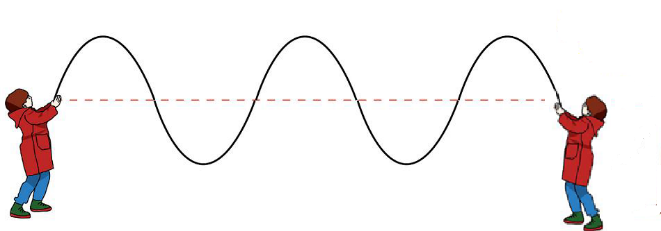
Schedule a Free session to clear worksheet doubts
No credit card required, no obligation to purchase.
Just schedule a FREE Sessions to meet a tutor and get help on any topic you want!
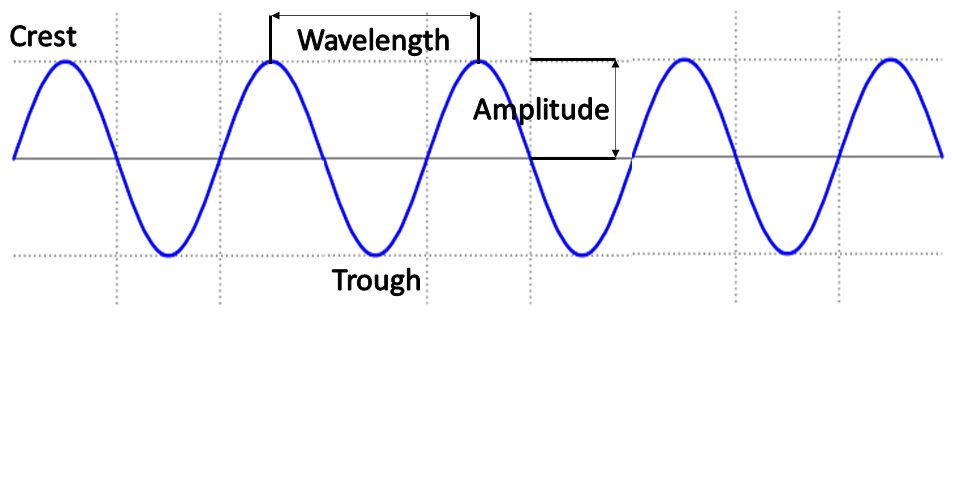
Energy-carrying waves are all around us. Here are some more examples–
- Ocean waves carry energy in the form of waves created by water particles.
- Sound, which is also a form of wave energy, travels through the air to reach our ears, due to the Vibration of air particles.
- Seismic waves caused by earthquakes travel through the earth.
- You can hear the sound and feel the vibration if someone hits one end of a long metal rod and you hold and put your ear to it at the other end.
- Electromagnetic waves carrying light, radio, and television signals can even travel through a vacuum.
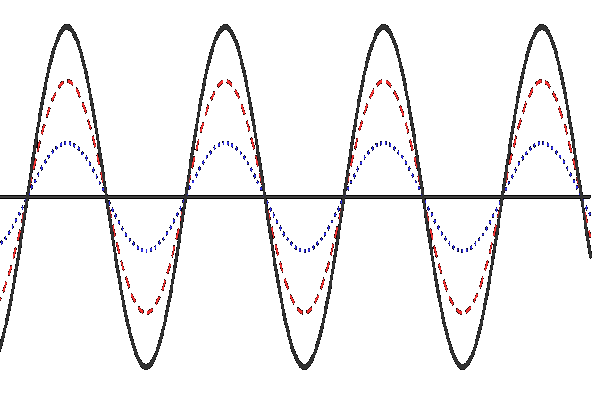
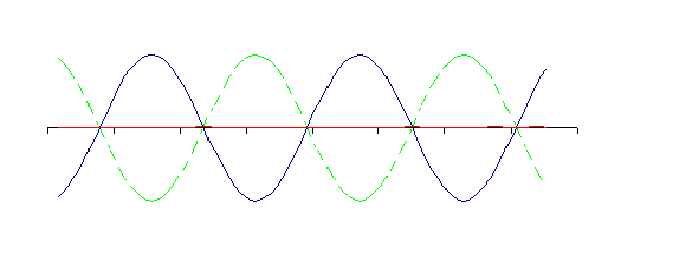
Interference in Waves
Two waves passing through the same space at the same time cause Interference. Interference occurs in all waves. Your TV reception is affected by the interference of electromagnetic waves from a thunderstorm.
Wave interference can be In Phase or Out of Phase (Constructive or destructive interference). If the Crests of two waves pass the same point at the same time, then they are in phase and they Reinforce each other. Sound will be louder for the Resultant Wave than for each individual wave.
If the crest of one wave passes a point at the same time as the Trough of another, then the two waves are out of phase and they Cancel each other out – there is Silence.
Free End and Fixed End Wave Behavior
Waves are affected by the end of the medium in which they are traveling, called Boundary Behavior. Consider a rope held at one end by a boy with the other end lying freely on the ground (Free End). A sharp upward pull of the rope by the boy will travel down the length of the rope as a wave and reach the free end. At this point, the wave simply returns back to the boy in the same upward manner.
If the other end is tied to a tree (Fixed End), then a sharp upward tug will travel down the length of the rope as a wave and reach the fixed end. At this point, the wave is inverted and returns back to the boy in a downward manner.
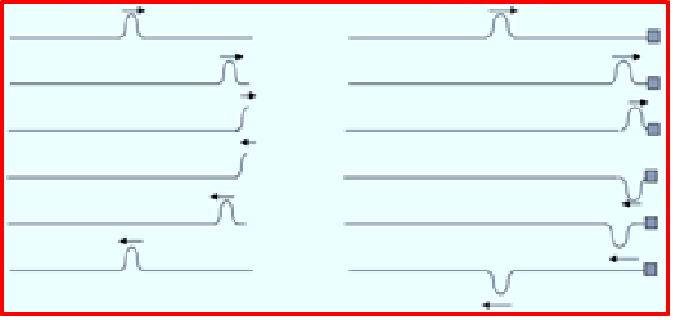
Learn more about Nature of Energy and other important topics with 8th Grade Science Tutoring at eTutorWorld. Our expert science tutors break down the topics through interactive one-to-one sessions. We also offer the advantage of customized lesson plans, flexible schedules and convenience of learning from home.
eTutorWorld Understands Math Tutoring | Online Math Worksheets are Important Tools
Understanding graphs, charts, and opinion polls in a newspaper, for calculating house and car payments, and for choosing a long-distance telephone service are impossible without strong math skills …and the only way to develop strong math skills is by constant practice.
‘Practice makes a man perfect’ holds true for no other field better than for math. A middle or high school student must set aside a minimum of an hour for math every day. Other than textbooks, worksheets help you revise and understand concepts better.
Our expert tutors prepare online maths worksheets that are age and grade-appropriate. Grade-wise math worksheets for Elementary Math, Arithmetic, Pre-Algebra, Algebra, Geometry, Trigonometry, Statistics, Pre-Calculus and Calculus can be solved to improve math skills, to get ahead or to even catch up.
You may download these FREE online math worksheets in the PDF format, and then print and email us their solutions for a free evaluation and analysis by eTutorworld’smath expert tutors.
You may solve these worksheets by yourself or with your peers while studying together.
The Answer Key at the end of each worksheet allows for a self-evaluation.
Personalized Online Tutoring
eTutorWorld offers affordable one-on-one live tutoring over the web for Grades K-12, Test Prep help for Standardized tests like SCAT, CogAT, MAP, SSAT, SAT, ACT, ISEE and AP. You may schedule online tutoring lessons at your personal scheduled times, all with a Money-Back Guarantee. The first one-on-one online tutoring lesson is always FREE, no purchase obligation, no credit card required.
For answers/solutions to any question or to learn concepts, take a FREE CLASS.
No credit card required, no obligation to purchase.
Just book a free class to meet a tutor and get help on any topic you want!
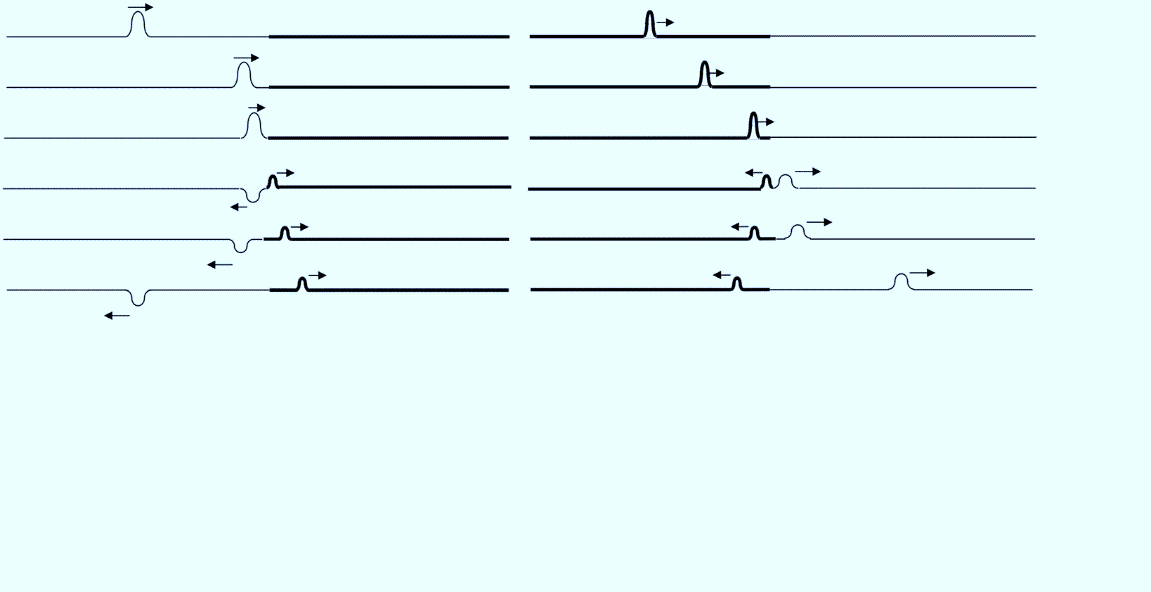
Wave Behavior in Slow and Fast Mediums
Waves are also affected by the nature of the medium in which they are traveling. If the rope is thin for half the length and thick for the other half, then the thin section is a faster medium for wave propagation than the thick section.
A wave originating from the thin section and traversing to the thick section will consider the start of the thick section as a fixed end boundary and will proceed into the thick section with reduced energy. At the same time, a reverse, inverted wave will originate backwards from the boundary into the thin section.
A wave originating from the thick section and traversing to the thin section will consider the start of the thin section as a free end boundary and will proceed into the thin section with reduced energy.At the same time, a reverse, identical wave will originate backwards from the boundary into the thick section.
Note that, in both cases, energy is not lost in the propagation, in keeping with the Law of Conservation of Energy.
Reflection and Refraction
When a wave meets a fixed end, it is Reflected back. Reflection depends on the Angle of Incidence at which the incoming wave strikes the fixed end. The Angle of Reflection is always the same as the angle of incidence. This behavior is similar to bouncing a ball off a wall or flashing light at a mirror.
When a wave moves from one medium to another, some energy is reflected back into the originating medium while some energy is Refracted into the new medium. Reflected energy increases with increase in the angle of incidence. Refracted energy decreases with an increase in the angle of incidence.
The Angle of Refraction changes as it passes into the new medium. The wave bends either towards or away from the normal perpendicularly drawn on the new medium. Waves entering a denser medium shift towards the normal (angle of refraction is less than the angle of incidence), while waves entering a less dense medium move away (angle of refraction is larger). The amount of energy refracted into a denser medium is also lesser than that refracted into a less dense medium.
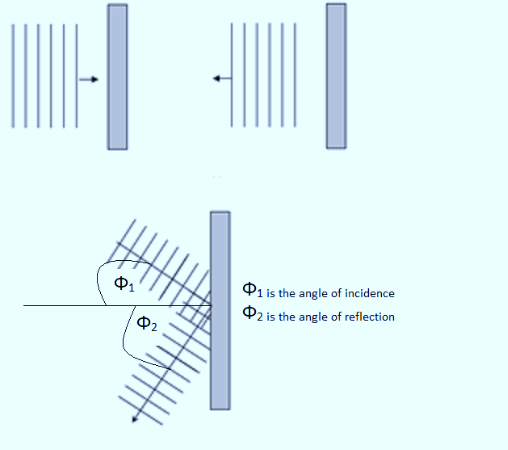
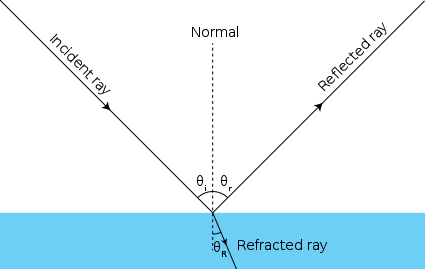

A pencil inserted in water appears bent because light travels slower in water than in air
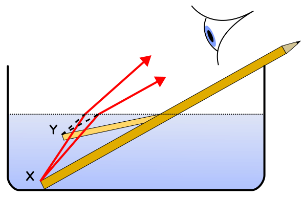

Check Point
- A wave is a form of ______.
- Which of these is not a wave?
- Light
- Rope
- Sound
- Earthquake
- Electromagnetic
- Two waves of the same kind passing through the same space at the same time can cause ______.
- A wave encountering a fixed end is ______.
- Do reflection and Refraction depend on which of the following?
- Angle of Incidence
- Density of medium
- Color of water
Answer Key
- Energy
- b) Rope
- Interference
- Inverted
- a) and b) Angle of Incidence and Density of Medium
Schedule a Free session to clear worksheet doubts
No credit card required, no obligation to purchase.
Just schedule a FREE Sessions to meet a tutor and get help on any topic you want!
Pricing for Online Tutoring
8th Grade Free Worksheets
- The Universe
- Heredity
- Evolutionary Theory
- Structure of the atom
- Ethical Practices
- Unveiling the mystery behind the physical universe
- Components of the universe
- Celestial phenomena
- The tilt of Earth’s axis
- The causes of high and low tides
- Earth Systems
- Rocks and Fossils
- Weather and Climate
- Basics of chemical reactions
- Types of Chemical reactions – Endothermic, exothermic, oxidation, reduction reactions
- Catalysts and enzymes
- Compounds and mixtures
- Acids, Bases and pH Indicators
Images Credit:
https://upload.wikimedia.org/wikipedia/commons/b/b6/Wave_in_a_rope.png
https://upload.wikimedia.org/wikipedia/commons/f/ff/Destructive_interference_.png
https://upload.wikimedia.org/wikipedia/commons/thumb/7/73/Superposition-constructive-interference.svg/680px-Superposition-constructive-interference.svg.png
http://www.nerdlyarts.mtsscience.ca/SPH4U/Light%20and%20Waves/Transmission%20of%20Wave.pdf
https://upload.wikimedia.org/wikipedia/commons/thumb/b/b2/Ray_optics_diagram_incidence_reflection_and_refraction.svg/638px-Ray_optics_diagram_incidence_reflection_and_refraction.svg.png
https://cdn.pixabay.com/photo/2017/06/14/23/11/pencil-2403662_960_720.jpg
https://upload.wikimedia.org/wikipedia/commons/thumb/c/cc/Pencil_in_a_bowl_of_water.svg/888px-Pencil_in_a_bowl_of_water.svg.png
IN THE NEWS

Our mission is to provide high quality online tutoring services, using state of the art Internet technology, to school students worldwide.
Online test prep and practice
SCAT
SSAT
ISEE
PSAT
SAT
ACT
AP Exam
Science Tutoring
Physics Tutoring
Chemistry Tutoring
Biology Tutoring
Math Tutoring
Pre-Algebra Tutoring
Algebra Tutoring
Pre Calculus Tutoring
Calculus Tutoring
Geometry Tutoring
Trigonometry Tutoring
Statistics Tutoring
Quick links
Free Worksheets
Fact sheet
Sales Partner Opportunities
Parents
Passive Fundraising
Virtual Fundraising
Our Expert Tutors
Safe and Secure Tutoring
Interactive Online Tutoring
After School Tutoring
Elementary School Tutoring
Middle School Tutoring
High School Tutoring
Home Work Help
Math Tutors New York City
Press
©2022 eTutorWorld Terms of use Privacy Policy Site by Little Red Bird
©2022 eTutorWorld
Terms of use
Privacy Policy
Site by Little Red Bird






